Rollin’ on
the River …
The amazing career of John Fogerty
Do you remember the first time you heard a song that changed your perception of popular music? For me, it was “Fortunate Son” by Creedence Clearwater Revival. Growing up, my parents frequently listened to oldies stations as we drove to school or soccer practice (I remember wondering as a child how my mom knew every song on the radio), and I can still recall the first time I heard Fogerty’s voice come over the airwaves. This was a very significant moment in my life for two reasons. Number one, the song is absolutely flawless. And number two, I had never heard an anti-war song on FM radio before. What was this guy who was singing about silver spoons and senators’ sons even talking about? Was this even legal? Hell, yes, it was legal, and I wanted more of it.
As a pre-teen, I dug deeper into Creedence Clearwater Revival, downloading their albums on file-sharing sites like Limewire and Napster and buying their greatest-hits compilations at Best Buy. Around the age of 15, I discovered vinyl and sold my collection of CDs to places like Cat‘s Music and Spin Street (Turtle’s Records + Tapes at the time), but my Creedence CDs stayed put.
Creedence Clearwater Revival only existed from 1967 to 1972 (even though the trio of John Fogerty, Stu Cook, and Doug Clifford had been playing together since 1959). Think about that for a minute. Think about churning out that many gold records and huge hits in such a small amount of time. Think about writing one good song that would become synonymous with the late 1960s, let alone a handful. In five short years, Fogerty went from being discharged from the Army to being a rock-and-roll star with one of the most recognizable voices in modern music.
All this success came at a price, and Creedence Clearwater Revival went through their fair share of turmoil, even at the peak of their popularity. Their headlining performance at Woodstock was not included in the original Woodstock film because Fogerty claimed the performance was subpar (Cook disagreed – one of many disagreements between Cook and Fogerty). Ultimately, it was the rough relations between Fogerty and the rest of Creedence Clearwater Revival that led to their break-up in 1972. Fogerty addressed his hard-nosed ways in an interview with The Guardian in 2013.
“Yes, I was very disciplined,” Fogerty said. “Were there any drugs involved? Yeah, I smoked a little pot. I think my bandmates smoked quite a bit more pot. I had rules: Never do that when we‘re recording; never do that when we‘re playing. To me it was a competition. You‘d have the Grateful Dead and Jefferson Airplane talking like: ‘We don‘t want to be successful, maaaaan.‘ For one thing I wasn‘t sure I believed them and for another, why would I go to all this trouble and only sell one record to my mom? I wasn‘t embarrassed that I was ambitious. We wanted to be the best we could be.”
Fogerty kept his discipline as a solo artist and started cranking out more hits, first under the name the Blue Ridge Rangers and later as John Fogerty. When Creedence Clearwater Revival was inducted into the Rock and Roll Hall of Fame in 1993, Fogerty refused to perform next to Cook and Clifford and was instead joined by Bruce Springsteen and Robbie Patterson to perform three classic Creedence songs. In 2011, Fogerty told Rolling Stone that his anger toward his former bandmates had diminished and even went as far to say that a full-scale reunion was possible. Pretty impressive for an artist who wouldn’t even play the songs he wrote for Creedence Clearwater Revival live for 25 years after their 1972 split.
Sure, Neil Young is great, but he didn’t write “Someday Never Comes,” “Who’ll Stop the Rain,” “Long As I Can See the Light,” or even “Run Through the Jungle,” and for that reason I can comfortably say that Fogerty is one of the best, if not the best, American rock-and-roll singers of all time. Don’t miss his first performance in Memphis in 20 years when he plays Beale Street Music Fest on Saturday night, because someday never comes. – Chris Shaw
John Fogerty plays the Rockstar Energy Drink Stage Saturday, May 2nd, at 10:15 p.m.
St. Vincent …
The evolution of Annie Clark
I first fell in love with Annie Clark, aka St. Vincent, when I saw her do a searing cover of the Pop Group’s “She Is Beyond Good and Evil” on a summer music festival webcast. Before that, I had been aware of her mostly as the former guitarist for folk rocker Sufjan Stevens. But there she was, absolutely killing it in front of a huge crowd, not with some big party anthem, but with a fairly obscure English post-punk song. If anything, her interpretation was even weirder and harder than the original. Every time she stepped back from breathily reciting the lyrics, she strangled out squalls of No Wave noise from her guitar. Then she leapt into the crowd and proceeded to sing her song “Krokodil” while her tiny frame was being thrown around by a few thousand sweaty festivalgoers. Then, after barely escaping with her life, she did an encore.
Clark was born in Oklahoma and grew up in Dallas. She took to guitar at the age of 12 and showed immediate talent. Her first taste of a musician’s life was touring with her aunt and uncle, the jazz duo Tuck & Patti. Clark played in punk bands in high school and then attended the prestigious Berklee College of Music in Boston. She dropped out due to frustration after three years and landed a job playing guitar with the psychedelic folk group Polyphonic Spree, before hooking up with Stevens. She struck out on her own in 2006 with Marry Me, an album of meticulously arranged songs that showed the influence of the baroque popsters for whom she had been serving as side-woman. By the time of 2011’s Strange Mercy — recorded over a month in self-imposed isolation in Seattle — she had found a voice and a sound that were entirely her own. It was Bowie-descended art rock with teeth, and like the Thin White Duke, she had an ear for taking the best quirks of any genre that caught her fancy and recombining them into something new, yet still tantalizingly familiar.

Annie Clark, aka St. Vincent
As more people turned up at her shows, the introverted musician gained the confidence to charge headlong into crowds, Iggy Popstyle. But it was her absolute mastery of the guitar that transfixed audiences. On such songs as “Cheerleader,” she proved she could switch from an Athens jangle to a noise meltdown and back, effortlessly, unafraid of either crunchy power chords or twisted jazz phrasings.
Then, in 2012, she completely switched gears, collaborating with the legendary David Byrne on Love This Giant. The album was noticeably short on guitar but heavy on horns, with many songs constructed more like marching band arrangements than traditional rock or pop songs.
Like Byrne and Bowie, her collaborations are not just pickup bands, they’re learning experiences. With a new record contract and a fresh set of ideas, 2014’s self-titled
St. Vincent was her best work yet. Always sonically restless, Clark delved heavily into guitar-triggered synths, creating tones that managed to recall both pre-King Crimson Adrian Belew and 1980s electro-pop. The ingenious arrangements and song structures were still intact, as on album standout “Huey Newton,” which starts out as an airy synth pop number before turning on a dime into a square wave, Black Sabbath cruncher. The single “Digital Witness” sounded like nothing else in pop music, but still captured the selfie-obsessed zeitgeist. You never know what’s going to happen next in a St. Vincent song, but the weirdness is always in service of real emotion.
If St. Vincent marked a musical turning point, her stage show had also undergone its own radical change. Instead of the blood and guts, punk girl with an axe and amp, she and her band carefully choreographed everything that happened on stage. Like Bowie, the stretches of strict control had the effect of amplifying the moments when the mask falls and the audience catches a glimpse of the turmoil going on inside her head.
Clark has a reputation for being tight-lipped about her personal life, preferring to focus on the music, which she says reveals all that needs to be revealed. The reticent performer is always intriguing, which makes her first single of 2015, the frank memory “Teenage Talk,” a tantalizing sample of a more intimate musical direction. St. Vincent’s set on Sunday is not to be missed.
— Chris McCoy
St. Vincent plays the FedEx Stage Sunday, May 3rd, at 7:30 p.m.
Ghost Town Boys …
A closer look at Ghost Town Blues Band
Ghost Town Blues Band is one of the few Memphis-based groups (along with Star and Micey and Prosevere) who have been asked to play Beale Street Music Fest (BSMF) for the past few years. Formed in 2009, Ghost Town Blues Band is led by Matt Isbell, a multi-instrumentalist and tour-tested musician who also fashions instruments out of everything from cigar boxes to broomsticks in his spare time. When asked at what moment Isbell knew he wanted to play Beale Street Music Fest, he recalled seeing one of his favorite guitarists play the festival as a teenager.
“I remember being around 14 years old and seeing Todd Snider playing at Beale Street Music Fest and just being blown away,” Isbell said. “I had talked to him a little bit before and seen him play around town, so it didn’t just seem like some huge rock star playing on stage; it actually seemed like a touchable dream.”
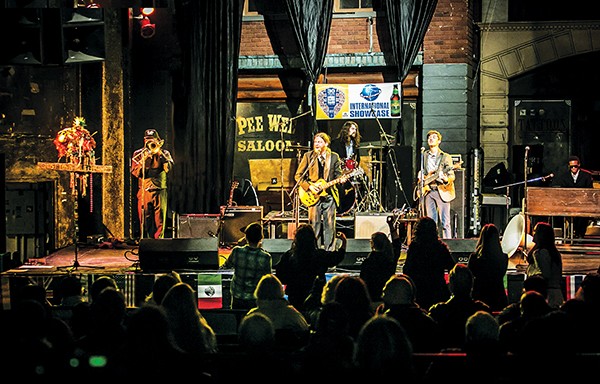
Ghost Town Blues Band
Snider would later invite Isbell to hang out at Ardent Studios and sit in on a recording session – his first opportunity to see the legendary music studio in all its glory. Fast forward to 2013, and Isbell’s dream became a reality.
“The first time we played Beale Street Music Fest was in 2013 at the Southern Comfort Blues Shack,” Isbell said.
“When we started, there were about 30 or 40 people watching us play, and by the end I’d say there were close to 400 people standing there — and not just because we were playing next to the port-a-potties. I guess that’s when I felt like we belonged at a festival like Memphis In May. After that performance, I felt like we deserved to be there.”
A mentor like Snider helps, but that’s not what has landed Ghost Town Blues Band a spot on three consecutive BSMF lineups. Since forming six years ago, Ghost Town Blues Band has grown ever more popular with their infectious blend of modern blues and Southern rock. The band has toured the States numerous times and been championed in publications like Living Blues Magazine.
Their list of awards is impressive: 2014 International Blues Challenge, Second Place; 2013 Memphis Blues Society International Blues Challenge Winner; 2012 Rosedale Blues Society Winner; and a 2010 Independent Label Music Award in Germany. Their latest album, Hard Road To Hoe, is more introspective than anything the group has created before, with songs referencing the death of Isbell’s mother and other hard life lessons. Released in March, the album has received rave reviews and debuted on the Living Blues Chart at number 18.
Isbell said the first opportunity to play Beale Street Music Fest came before the band had finished playing all their sets at the 2013 International Blues Challenge.
“Mike Glenn [former owner of the New Daisy] is the artist relations guy for Joe Whitmer from the Blues Foundation, and they pretty much run all the blues tents at Beale Street Music Fest,” Isbell said.
“I don’t know how he got my number, but Mike gave me a call before we had even finished playing the 2013 Blues Challenge and asked me, ‘How do you feel about playing Beale Street Music Fest?’ Since then, they’ve always taken real good care of us; they put us up in a trailer and make sure we always have cold beer.”
Isbell said playing multiple Beale Street Music Fests has brought the band notice in some of the strangest places. “We could be playing a show in Canada and someone will come up to us and say they saw us play Memphis In May,” Isbell said.
“That’s when it kind of hits you just how big the festival is. Being from Memphis, I think people kind of take for granted how special the event really is. People from all over the country come to Beale Street that weekend and we don’t try to use it as a booking tool or anything, but we definitely feel the result of playing the festival when we are away from home.”
As for what to expect from Ghost Town Blues Band at this year‘s Beale Street Music Fest, Isbell said they plan to show the crowd what Memphis is all about.
“We are extremely grateful for the opportunity to play a third year and to show people from out of town how Memphis does it,” Isbell said.
“We were grateful to play the Southern Comfort Blues Shack that first year, so moving up to the Blues Tent is really cool. I mean, we would play in the bathrooms of that place if it meant getting a chance to perform. I guess our biggest hope for this year‘s music fest would be for Robert Randolph to come and sit in with us.” — CS
Ghost Town Blues Band plays the Pearl River Resort Blues Tent on Saturday, May 2nd, at 2:10 p.m.
Q&A …
with Memphis In May President and CEO Jim Holt
Jim Holt has been with Memphis In May since the beginning. He’s watched the festival go from a two-night event on Beale Street to a three-day and three-night experience at Tom Lee Park for 100,000 people. Deep in the throes of last-minute planning and preparations, Holt was kind enough to let me ask him some questions about the origins of the festival and what makes Memphis In May one of the most attended music festivals in the South. — CS
Flyer: Can you tell me what the transition was like when the festival moved from Beale Street to Tom Lee Park?
Jim Holt: We had been operating a smaller music festival with the Merchants Association, where we would put a stage in Handy Park and program the nightclubs with bands, but it wasn’t financially successful. There was talk in 1989 about doing away with the music festival, but we didn’t want to see it
go away.
We came up with the idea of doing it at Tom Lee Park because the barbecue festival and the Sunset Symphony were successful there. I was working for a company called Mid-South Concerts at the time, and we ended up doing a sponsorship with the festival in the fall of 1989. I think the first festival [at Tom Lee Park] was held on April 27th and 28th of 1990. Mid-South Concerts sponsored the event, along with AutoZone and Budweiser.
What were those early Beale Street Music Festivals at Tom Lee Park like?
It started off with two outdoor stages and was two days long. There were way fewer artists because there were way fewer performance stages at that time, and Tom Lee Park was only six to eight acres. In the mid-1990s, the city of Memphis added 15-plus acres to the park, which allowed growth for both the barbecue festival and Beale Street Music Fest.
How many months of planning does it take to pull off a festival of this size?
We have a staff of 14 people who work year-round. There is a lot of cleanup that goes on in June and July and then August 1st is when we start our fiscal year and do our annual review. It’s a long process. We sent out our first talent offer for this year on August 26th, and that same week we issued seven offers to artists. We’ve got 67 artists this year, maybe 66, and we place offers on probably 124 different acts.
At what point did you have to embrace the typically poor weather as just a part of Beale Street Music Fest?
I like to look at the blue skies and sunshine in life, that’s my philosophy. We track the weather, and if you look at the last three years, there’s only been rain on one of the weekends. In 2013, it was just freakishly cold, but I don’t remember that much rain. Some weekends in the past we have had fabulous weather, and when that happens there’s really just no better place to be.
I read an article where someone was joking about Tom Lee Park becoming the fourth largest city in Tennessee during Memphis In May. How does the festival function like a miniature city during Beale Street Music Fest?
We lay down a plumbing grid and an electrical grid, and we build an infrastructure in Tom Lee Park that costs nearly $1 million. Over the course of the month we flip the park three times, so there is a lot of detail and hard work that goes into making everything function properly.
If you had to pick some of your favorite artists who have played Beale Street Music Fest in the past, who would they be?
I tend to bounce around from stage to stage and check on problems, but I thought that Stevie Ray Vaughan playing on April 28, 1990, was just incredible. The park was about a third of the size it is now and there were 17,000 or 18,000 people in attendance. He died four months later in that helicopter crash, so that was a very special performance.
James Brown’s first performance in 1993 was also unbelievable. Stevie Ray Vaughan stands out, but there’s been so many memorable performances over the years, from B.B. King to Etta James and Little Richard. ZZ Top were amazing when they played.
We also have an incredible lineup for this year’s festival. Lenny Kravitz hasn’t played in the market since 1996, Ed Sheeran couldn’t be any hotter, and everyone is excited for Hozier. It’s tough when you look at this year’s schedule. People are going to have to make decisions.
How do you go about picking the local bands? Any tips for local bands interested in playing?
We have a committee that is really knowledgeable about what is going on musically in the city, and we solicit input from them. We look at who is really at the cusp of breaking nationally and we try to pick the artists who are getting ready to pop. There are so many great artists in this town that you could book a whole weekend of local talent if you wanted to. We’ve had locals like the Memphis Dawls and Amy LaVere, and they both did a great job. We are always excited to have artists like Al Kapone and Three Six Mafia and Yo Gotti. We always try to get the best of the best in Memphis.
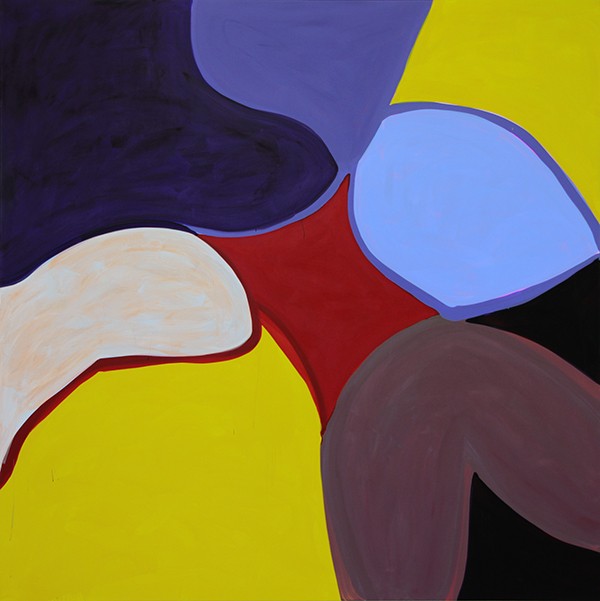


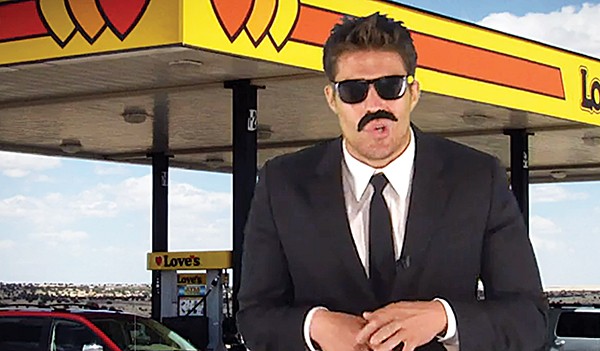

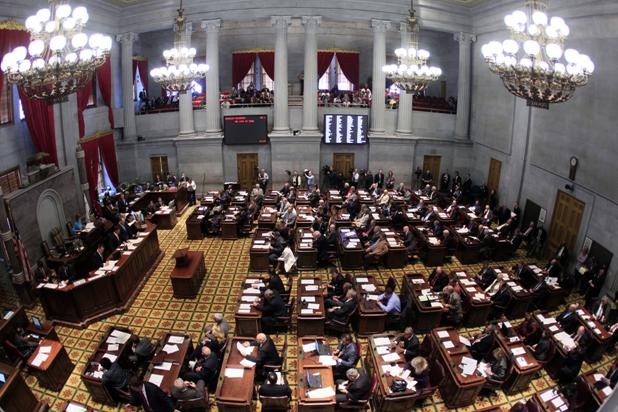


 Sandra McDougall-Mitchell
Sandra McDougall-Mitchell 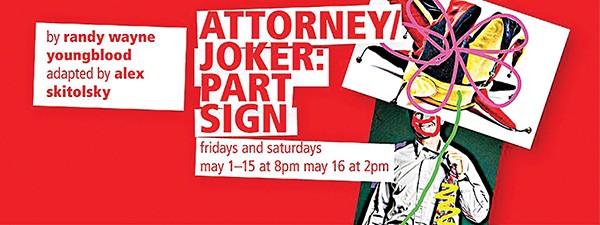
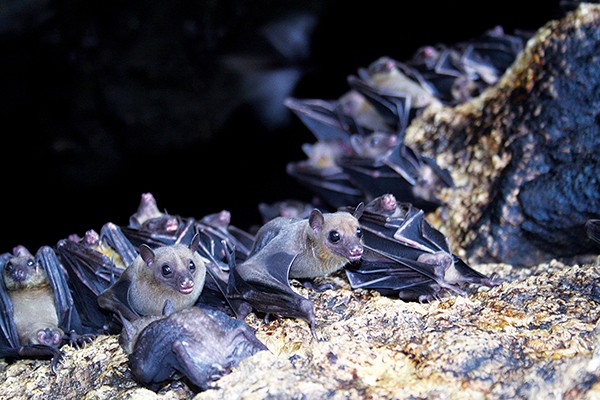 Tolitsayala | Dreamstime.com
Tolitsayala | Dreamstime.com 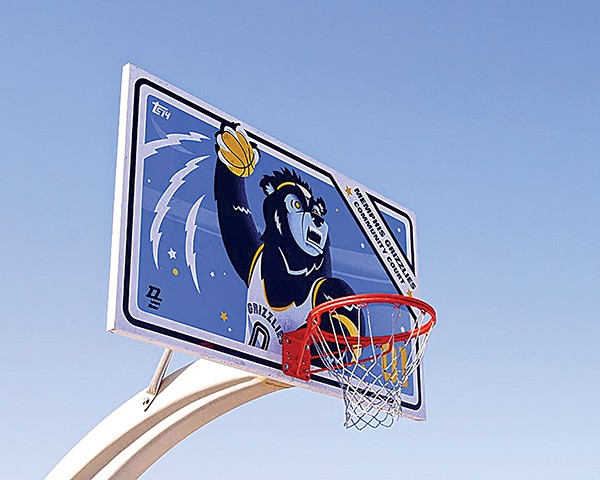 Project Backboard
Project Backboard